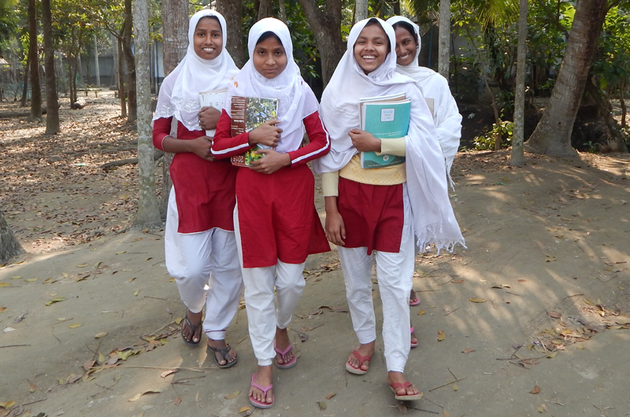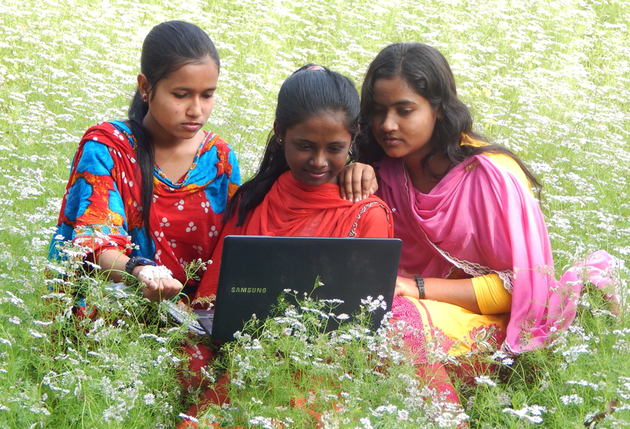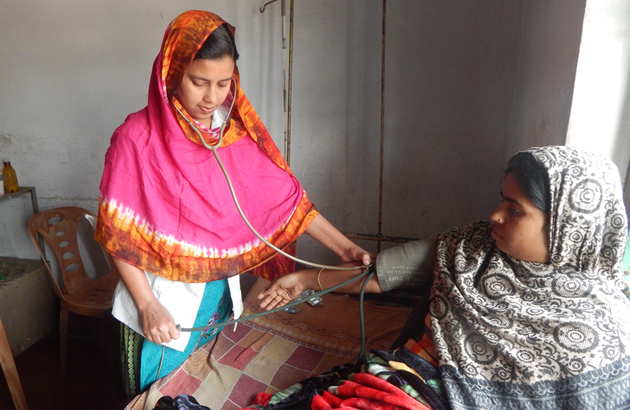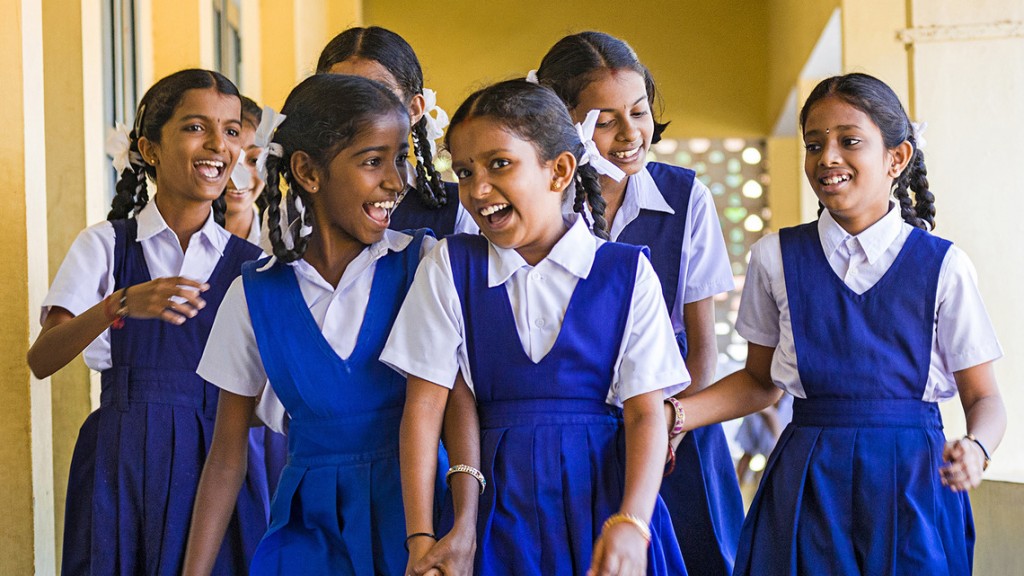A study by Population Council in Bangladesh, called the BALIKA project, found that providing girls with educational support and training on gender rights and decision-making reduces the likelihood of child marriage by one third.
“It was about girls articulating what they wanted,” Amin said. “What made a difference was showing that girls are of value, that they can do something beyond the reproductive and the domestic; that they are assets, not liabilities.”

Girls participating in the BALIKA project. Photo: Shamima, Narail
Bangladesh has one of the highest rates of child marriage in the world, with two out of three girls marrying before the age of 18, according to Unicef.
Marrying underage negatively affects girls’ health and life outcomes: Child brides are less likely to stay in school, and more likely to be victims of domestic violence.
Though the legal age to wed in Bangladesh is technically 18, the practice of underage marriage is still widespread, especially in rural areas.
“To address child marriage — which everyone is interested in — don’t just enforce laws and make sanctions,” said Sajeda Amin, senior associate for Population Council, to The Huffington Post. “What you need is something that gets at the motivations behind child marriage. In Bangladesh, it’s that girls are not valued; they’re seen as a burden, a liability. We’re trying to address those perceptions.”
The research tested three different approaches to delaying marriage in young girls: the first was to give girls education; the second was to give them life skills, including training on gender rights and decision-making; and the last was to give them jobs training. All three interventions aimed to elevate girls’ status in their communities and provide them with the tools they need to succeed in life.
What they found was encouraging:
- Girls who received educational support, with tutoring in math and English for in-school girls, and computing or financial training for out-of-school girls, were 31 percent less likely to be married as children;
- Girls who received life skills support, with training on gender rights and negotiation, critical thinking, and decision making, were also 31 percent less likely than the control group to be married as children;
- Girls who received jobs support, with training in computers, entrepreneurship, mobile phone servicing, photography and basic first aid, were 23 percent less likely to be married as children.
“I learned from BALIKA that I can say ‘no’ to a marriage proposal,” said a participant in the study. “If a marriage proposal comes and I am too young to marry, I am able to express my opinion to convince my parents.”

The study was carried out over four years with 9,000 girls across 72 communities. For the duration of the study, girls in each community gathered once a week in a safe, girl-centered space in a local school to receive support.
The impact went beyond just reducing child marriage: girls in BALIKA were more likely to stay in school, to have superior math skills, and to earn an income.
“The more powerful effect is that once you see it’s okay for one girl to get married later, then it becomes okay for others too,” Amin said.

With around 40 million girls worldwide becoming child brides by 2020, the goal is to find ways to replicate these results, in Bangladesh and elsewhere.
The study makes some recommendations: programs should be designed around the specific drivers of child marriage in each country; they should start interventions earlier rather than later; and they should create girl-centered spaces, where young women can feel safe to gather and to improve their self-confidence.
“It’s a collaboration with the community. It wasn’t us versus them: it was working with them, rather than imposing what we feel should happen,” Amin said. “It was about changing the norms, so everyone can come on board.”

